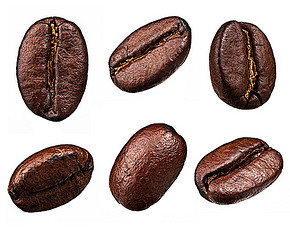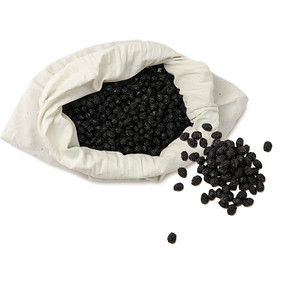Description of taste and flavor of Sidamo coffee beans
Pay attention to coffee reviews (Weixin Official Accounts vdailycom ) and find a beautiful cafe to open your own shop
Sidamo coffee is very diverse. Different soil types, microclimate and numerous native coffee species, high mountains, highlands, plateaus, valleys and plains, diverse terrain, and the geology of the area is rich in nutrients, well drained volcanic soil, soil depth of nearly two meters, the surface soil is dark brown or brown. Its greatest advantage is that soil fertility is maintained through the recycling of organic matter, using withered leaves from surrounding trees or plant roots as fertilizer. Therefore, the coffee produced in the town has obvious differences and characteristics. In 2010- 2012, it continuously obtained high scores of CR92- 94 from the authoritative coffee evaluation website in the United States. This shows that the production of raw beans extraordinary.
Sitama coffee beans are slightly gray, some places are coarse and some places are fine, the acidity is soft and strong, the alcohol is appropriate, and the sweet and spicy aroma is one of the courtyard coffees in the southern highlands of Ethiopia. It differs from African coffee in that Sidamo has a clear acidity, a smooth taste and a delicate floral aroma.

Sunlight Sidamo tastes close to floral, but slightly earthy. Wash it with nutty fruit aromas, with a slight cocoa aroma, but the two have in common a smooth taste and viscosity, pleasant acidity and aroma. Light or medium roasts are suitable for single serve, medium or deep roasts are suitable for blended coffee and a good Espresso base.
Sitama treated by washing is light green, small beans, oval growth, full fruit, good average quality, mellow smell, a drop of mouth, endless aftertaste, with wild beauty. It is elegant and playful, mild and pleasant on the palate, with a strong impact on the palate with bright lemon acids later. The palate is unique and mellow, with a sweet and pleasant finish that rises slowly and contains unique sweetness.
Ethiopia Ethiopia
Population: 93877000
Ethiopia's appellation is the most recognizable in the coffee world, and is currently the country with the most appellation as coffee. Today, the future is predictable. In addition, the Arabica gene potential of the original species and wild species will also be a major advantage for Ethiopian coffee.
SIDAMO
Shidamo and two other regions, Hara and Yegashev, registered trademarks in 2004 with the approval of the Ethiopian government, increasing the recognition of the region's reputation and the distinctive characteristics of the local coffee beans. Sidamo uses a combination of washing and sun treatment to gain popularity among consumers who like fruit and strong aromas. After Italy withdrew from Ethiopia in 1942, the area was known locally as Sidama. Sidamo or Sidama is the generic term for coffee beans from this region. The area is also home to some of Ethiopia's high-quality coffee beans.
Altitude: 1400-2200m
Harvest: October-January
Breed: Heirloom
LIMU
Even without the fame of Sidamo and Yegashev, Lim still produces amazing coffee. Most of the area is small farmers, but there are also some large estates belonging to the government.
Altitude: 1400-2200m
Harvest: November-January
Breed: Heirloom
HARRAR
This area is surrounded by small towns around Harrah and is the oldest production area. The coffee in this area is very special and is not in an environment that requires additional irrigation. Harrah's reputation has long been high, although the sun treatment can modify the original cloudy, woody, earthy taste to a bright blueberry flavor. Coffee beans are so special and memorable that those who have worked in the coffee industry have been opened to the variety of flavors of beans.
Altitude: 1500-2100m
Harvest: November-February
Breed: Heirloom
YIGACHEFFEE
Yegashev coffee in short: diverse, unique. Many of these great washed beans show explosive aromas, citrus, floral and have a light and elegant essence. Admittedly, this area is a good and interesting coffee producing area, where the best beans naturally fetch higher prices. Yegashev's characteristics are recommended for those who like Earl Grey tea. Some of the beans were sun-treated, which was also unusually interesting and enjoyable.
Altitude: 1750-2200m
Harvest: October-January
Breed: Heirloom
Ethiopia's coffee market regulator is the Ethiopian Coffee and Tea Products Authority. There are two auction centres in the country, one in Addis Ababa, the capital, and the other in Dire Dawa, eastern Ethiopia. Coffee farmers bring fresh fruit either to private coffee processing plants or to cooperative coffee washing stations for washing. After washing and drying, the beans are transported to a central store in Addis Ababa, where they are thoroughly inspected and steeped, graded for poor quality and auctioned off. Coffee grown on state farms follows the same procedure after farm processing. Auction buyers scrutinize the beans and proof of steeping before bidding. Bidding takes the form of buyers shouting out bid prices Ethiopia exports 80 - 85 per cent of its beans every year, natural or sun-cured, and 15 - 20 per cent of its beans wet processed. Ethiopia has an estimated 2.5 percent market share in the global coffee market. Ethiopia's coffee exports to all parts of the world, Germany, Japan, Saudi Arabia and the United States are Ethiopia's four major coffee export countries. On average, Ethiopia exports approximately 109,000 tons of coffee (equivalent to 1.8 million 60-kilogram bags) worldwide each year.
Ethiopian coffee beans grow in a near-natural environment. After years of cultivation under the same growing conditions, Ethiopian coffee beans have gradually adapted to the environment here. More than 60% of coffee beans are forest or semi-forest grown coffee.
Coffee farming villages produce about 35 percent of the country's coffee. These coffee farms, which use a multi-tiered coffee growing system, are carefully cared for. Coffee farmers do not use chemical fertilizers, but use fallen leaves, plant and animal debris to increase soil nutrients. In addition to coffee, farmers also frequently grow non-coffee crops. Even manor coffee (coffee produced on state farms), which accounts for 5 per cent of the country's total coffee production, exhibits the characteristics of forest-type coffee production.
Located in the most privileged natural conditions, Ethiopia produces unique high-quality coffee every year. Ethiopia's coffee growing cycle brings harvest joy to the country every year. Beautiful white coffee flowers bloom and bear fruit every year between March and April. Only the reddest and most mature fruits are selected for coffee between September and about December. New coffee exports begin in November or December each year.
Ethiopians love coffee, with an annual per capita coffee consumption of 3 kg. Ethiopia ranks first in coffee consumption in Africa and, if compared to European countries, is also in the middle and upper ranks of European coffee consuming countries.
Ethiopia now produces coffee not only for drinking, but for coffee lovers all over the world to enjoy. As the coffee industry continues to improve in quality and productivity, Ethiopia is now better able than ever to deliver high-quality coffee to even the most discerning and discriminating customers. Ethiopia hopes that not only the coffee consuming countries of the world but also the Chinese people can share in Ethiopia's precious wealth. Because the Chinese people have gradually become the "experts" who appreciate the quality of coffee
Important Notice :
前街咖啡 FrontStreet Coffee has moved to new addredd:
FrontStreet Coffee Address: 315,Donghua East Road,GuangZhou
Tel:020 38364473
- Prev

What's the tasty Robusta like?
Following Cafe Review (Wechat official account vdailycom) found that Beautiful Cafe opened a small shop of its own. Generally speaking, there are two kinds of coffee, Arabica and Robusta. Of the coffee cultivated worldwide, 60% to 70% is Arabica, which has excellent flavor and aroma, and is the only coffee that can be drunk directly. We can often see that it is marked 10
- Next

Is Ethiopia G1 Sidamo coffee beans good?
Following Ka Pai (Wechat official account vdailycom) found that Beautiful Cafe opened a small shop of its own: Ethiopia. Sidamo Coffee Bean Origin: Ethiopian Grade: G1 roasting: shallow roasting (just explode) treatment: washing flavor: lemon, citrus, caramel Ethiopia. Sidamo is a type of single origin that grows in Ethiopia.
Related
- Detailed explanation of Jadeite planting Land in Panamanian Jadeite Manor introduction to the grading system of Jadeite competitive bidding, Red bid, Green bid and Rose Summer
- Story of Coffee planting in Brenka region of Costa Rica Stonehenge Manor anaerobic heavy honey treatment of flavor mouth
- What's on the barrel of Blue Mountain Coffee beans?
- Can American coffee also pull flowers? How to use hot American style to pull out a good-looking pattern?
- Can you make a cold extract with coffee beans? What is the right proportion for cold-extracted coffee formula?
- Indonesian PWN Gold Mandrine Coffee Origin Features Flavor How to Chong? Mandolin coffee is American.
- A brief introduction to the flavor characteristics of Brazilian yellow bourbon coffee beans
- What is the effect of different water quality on the flavor of cold-extracted coffee? What kind of water is best for brewing coffee?
- Why do you think of Rose Summer whenever you mention Panamanian coffee?
- Introduction to the characteristics of authentic blue mountain coffee bean producing areas? What is the CIB Coffee Authority in Jamaica?

